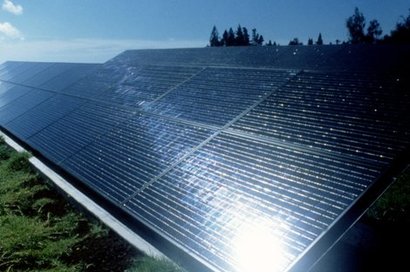
A new 52-page document packed with case studies released by trade association Solar Energy UK is intended to promote effective engagement with people living near proposed solar farms, from design to decommissioning. It seeks to support developers, operators and companies in the supply chain to deliver sustainable ground-mounted projects by promoting good relationships with neighbouring communities.
“The solar industry wants more than to deliver high-quality solar farms alone” said Chris Hewett, Chief Executive of Solar Energy UK. “We want to be good neighbours: taking local people along the journey to net zero with us, allaying misconceptions and taking their feedback into account.”
The solar industry is growing rapidly, aiming to reach the new Government’s goal of 50 GW by 2030. Accordingly, more communities could be affected by projects in the coming years, so bringing them along on the journey is even more critical.
The guidance is aimed at developers of solar farms of five megawatts or more across the whole of the UK. It hence refers to the varying statutory requirements of England, Wales, Scotland and Northern Ireland, while going beyond their minimum requirements.
Delivering good community engagement is mutually advantageous for developers and communities alike: reducing costs and delays by addressing issues early, reducing the risk of misunderstandings and building acceptance by demonstrating respect to local people.
The guidance describes an array of engagement tools, including customer relationship management systems, project websites, phone lines, dedicated staff, briefings to local government, newsletters and community forums. Organising visits to existing solar farms can also provide an opportunity to show people what a solar farm looks like in real life.
It also reminds developers to use local labour, suppliers and contractors, where possible – “a simple but effective way to demonstrate commitment to community relationships and contribute to the local economy.”
The guidance stresses the lasting economic, social and environmental benefits that solar farms can offer. These range from national-level benefits, such as reducing the cost of energy and strengthening energy security, to local ones:
Encouraging biodiversity.
Protecting footpaths and bridleways.
Providing reliable and diversified incomes for rural businesses, and often allowing grazing to continue.
Boosting the local economy through providing jobs and accommodating construction staff.
Offering educational opportunities for schools.
The case studies include how to manage challenges such as traffic management, best practice for creating online consultation portals, the Westmill community-owned solar farm and how rare species prosper at Wilburton solar farm.
Although linked, community benefits – voluntary packages to support host communities, such as regular contributions to local charities or upgrading local assets – are not covered by the guidance. However, a summary of the topic is provided, alongside another on shared ownership.
For additional information:

